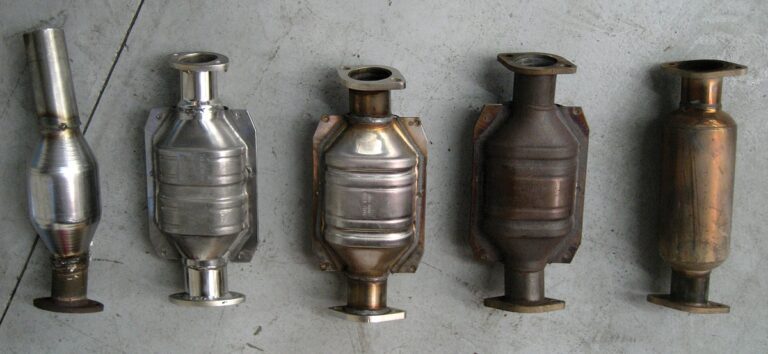Quick And Affordable Car Ac Repair Guide
If you need a quick and affordable car AC repair guide, follow these steps.

Credit: online.fliphtml5.com
Common Car Ac Problems
When your car’s AC starts acting up, it can be frustrating and uncomfortable. Common issues include blowing warm air, strange noises, and leaking refrigerant. Let’s dive into these problems:
Warm air coming from your car’s AC vents can be due to a variety of reasons, such as a refrigerant leak, a faulty compressor, or clogged air filters.
Strange NoisesUnusual sounds like squealing or grinding noises when you turn on the AC can indicate issues with the compressor, fan belt, or other components.
Leaking RefrigerantIf you notice a puddle of fluid under your car or a decrease in cooling efficiency, it could be a sign of refrigerant leakage, which needs to be addressed promptly.
Diy Troubleshooting Tips
Are you feeling frustrated with the AC in your car not working properly? Don’t worry! With a few DIY troubleshooting tips, you can save time and money by fixing it yourself. In this guide, we’ll walk you through the steps to check for refrigerant leaks, clean the AC condenser, and inspect the AC compressor. Let’s get started!
Checking For Refrigerant Leaks
One of the first things you’ll want to do when troubleshooting your car’s AC is to check for refrigerant leaks. Without enough refrigerant, your AC system won’t cool properly. Here’s how to do it:
- Turn on your car and switch the AC to its coldest setting.
- Inspect the AC lines and connections for any signs of oil stains or residue.
- Using a refrigerant leak detector or soapy water solution, check for any bubbles or a strong smell around the AC components.
- If you identify a leak, mark the area and consider consulting a professional for further repair.
Remember, fixing refrigerant leaks should be done by a trained technician, as handling refrigerant can be dangerous. It’s important to stay safe and let a professional handle any complex repairs.
Cleaning The Ac Condenser
The AC condenser plays a crucial role in cooling the air inside your car. However, over time, it can become clogged with dirt, debris, and bugs, hindering its efficiency. Here’s how you can clean it:
- Locate the AC condenser, usually located near the front of the car, behind the grille.
- Using a soft brush or compressed air, gently clean the condenser fins to remove dirt and debris.
- Make sure to clean both the front and back of the condenser thoroughly.
- Inspect the condenser for any signs of damage or bent fins. If detected, it’s best to consult a professional for repair or replacement.
Regularly cleaning the AC condenser can help improve the overall performance and efficiency of your car’s AC system, ensuring a comfortable and cool ride.
Inspecting The Ac Compressor
The AC compressor is responsible for circulating and pressurizing the refrigerant, playing a vital role in cooling your car. If the compressor is faulty, you may experience a lack of cold air. Here’s how to inspect it:
- Turn on your car and switch the AC to its highest setting.
- Listen for any unusual noises coming from the AC compressor, such as squealing or grinding sounds.
- Check the AC compressor belt for any signs of wear, cracks, or looseness. Replace if necessary.
- If you suspect a compressor issue, it’s best to consult a professional for proper diagnosis and repair.
By inspecting the AC compressor regularly, you can catch any potential issues early on and ensure the proper functioning of your car’s AC system.
Essential Tools For Diy Repair
When it comes to car AC repair, having the right tools is essential for a successful do-it-yourself project. Not only will these tools save you time and money, but they will also help you get your car’s AC system back up and running quickly and affordably. In this section, we will discuss three essential tools that you should have in your toolkit: the refrigerant pressure gauge, the UV leak detection kit, and the AC recharge kit.
Refrigerant Pressure Gauge
A refrigerant pressure gauge is a must-have tool for any DIY car AC repair. This device allows you to measure the pressure of the refrigerant in your car’s AC system, ensuring that it is at the correct level. With a refrigerant pressure gauge, you can easily diagnose if there is a problem with the refrigerant, such as a leak or undercharging. By monitoring the pressure, you can make informed decisions about the next steps to take in your repair process. Whether you are an experienced mechanic or a beginner, a refrigerant pressure gauge is a valuable tool to have in your arsenal.
Uv Leak Detection Kit
Another essential tool for DIY car AC repair is the UV leak detection kit. This kit contains UV dye that you can add to your car’s AC system. As the dye circulates with the refrigerant, it will highlight any leaks in the system. By using the accompanying UV flashlight, you can easily spot the areas where the dye has accumulated, indicating the location of the leak. Not only does the UV leak detection kit help you identify the problem areas quickly, but it also saves you from having to disassemble the entire AC system to find the leak. It is a cost-effective and time-saving solution for DIY repair.
Ac Recharge Kit
The AC recharge kit is a handy tool that allows you to refill the refrigerant in your car’s AC system. Over time, the refrigerant may leak or become insufficient, resulting in poor cooling performance. With an AC recharge kit, you can easily replenish the refrigerant yourself, saving you a trip to the mechanic and a costly service fee. The kit usually includes a canister of refrigerant, a hose, and a gauge to ensure accurate charging. It is important to follow the instructions carefully when using the AC recharge kit to avoid overcharging or other issues. Having an AC recharge kit in your toolkit will give you the freedom to maintain your car’s AC system whenever it needs a boost.

Credit: www.facebook.com
Step-by-step Repair Process
Learn the step-by-step repair process for a quick and affordable car AC repair guide. This easy-to-follow guide will help you troubleshoot and fix your car’s AC issues without breaking the bank, ensuring your comfort during those scorching hot summer days.
In car AC repair, follow a straightforward Step-by-Step Repair Process to quickly and affordably fix common issues. Let’s break down the repair process into three key tasks: Locating and Fixing Refrigerant Leaks Begin by identifying leaks using a UV dye and an ultraviolet light. Next, seal leaks with a suitable repair kit or replace damaged components. Ensure all connections are secure to prevent future leaks. Replacing the AC Compressor Clutch Disconnect the battery before removing the serpentine belt. Unbolt the clutch from the compressor and install the new one in the reverse order. Check for proper alignment and tension. Recharging the AC System Attach a manifold gauge set to measure system pressure. Evacuate the system to remove any air and moisture. Slowly recharge with refrigerant following manufacturer’s specifications. These steps will help you address common car AC issues efficiently.When To Seek Professional Help
Introductory paragraph about ‘When to Seek Professional Help’While a quick and affordable car AC repair guide can be handy for addressing common issues, there are instances when it’s essential to seek professional help to ensure the efficiency and longevity of your car’s AC system.
H3 heading: Complex Electrical IssuesComplex Electrical Issues
Some car AC problems stem from complex electrical issues that demand specialized expertise. If you encounter persistent electrical failures or erratic behavior, such as the AC system turning on and off unexpectedly, it is best to consult a professional technician to accurately diagnose and resolve the underlying electrical faults.
H3 heading: Internal AC Component DamageInternal Ac Component Damage
When your car’s AC system exhibits signs of internal component damage, such as unusual noises, leaks, or inconsistent cooling performance, it’s crucial to engage the services of a qualified professional. Attempting to fix internal damage without the necessary skills and tools can worsen the problem and lead to costlier repairs in the long run.
H3 heading: Inefficient Cooling After DIY AttemptsInefficient Cooling After Diy Attempts
If your DIY attempts at resolving car AC issues result in inefficient cooling or other performance issues, it’s time to seek assistance from a professional. Continued efforts to address the problem independently can potentially exacerbate the situation and result in higher repair expenses.

Credit: www.amazon.com
Frequently Asked Questions Of Quick And Affordable Car Ac Repair Guide
Can I Fix My Car Ac Myself?
Yes, you can fix your car AC yourself if you have the necessary knowledge and tools.
Why Is Fixing Ac In Car So Expensive?
Fixing AC in cars can be expensive due to various factors such as labor costs, specialized equipment, and the complexity of the system. Repairing or replacing components like compressors, condensers, or evaporators can also add to the overall cost. Regular maintenance and timely repairs can help prevent major AC issues and reduce expenses in the long run.
How Long Does It Take To Fix An Ac Unit In A Car?
It varies, but fixing an AC unit in a car typically takes around 2-4 hours, depending on the issue. Keep in mind that more complex problems may take longer to resolve.
What Is A Cheap Alternative To A Car Ac?
Car window shades are a cost-effective alternative to car AC, providing shade and reducing interior heat.
Conclusion
Keep your car AC running smoothly with these affordable repairs. Don’t let the summer heat get you down. Follow these tips for a quick fix. Stay cool on the go without breaking the bank. Your car and wallet will thank you for it.
Happy driving!


